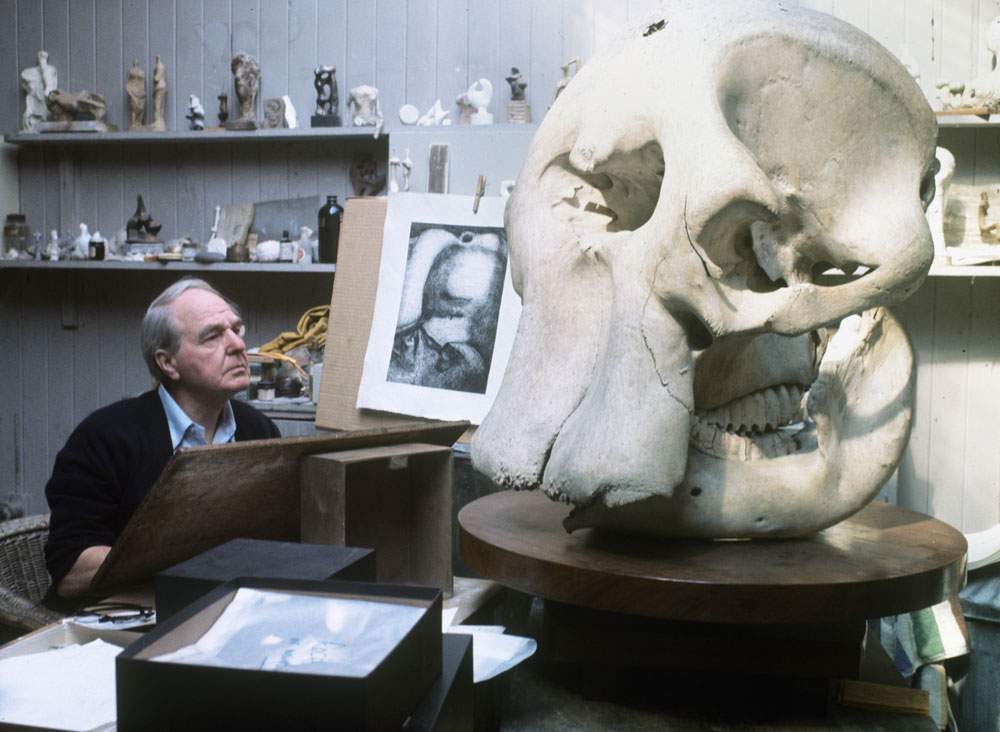After nearly fifty years, Henry Moore returns to Florence: from January 18 to July 18, 2021, the Museo Novecento in Florence hosts the exhibition Henry Moore. The Sculptor’s Drawing, curated by Sergio Risaliti and Sebastiano Barassi, organized in collaboration with the Henry Moore Foundation, with the contribution of Banca Monte dei Paschi di Siena. The Florentine museum venue will host about seventy drawings by the artist, along with graphics and sculptures.
“To have come after two years of challenging research to create a scholarly collaboration with the prestigious Henry Moore Foundation to bring the master’s works back to Florence, some fifty years after the epochal exhibition at Forte di Belvedere, is a source of pride and immense satisfaction,” commented Sergio Risaliti."Henry Moore. The Sculptor’s Drawing is meant to be a gift to the city that has suffered a dramatic pandemic crisis. The presence at this historic moment of Henry Moore’s works in Florence is also a reminder of the strength of art in the greatest human and social difficulties. Moore was an artistic beacon in the darkest days of European history, and his works are a testament to that. Thanks to the generosity of sponsors and the staunch support of the Administration, the goal has been achieved. We hope that this project will serve as a model for others, both in terms of scientific quality and sustainability. There is another aspect that should be highlighted: the unprecedented nature of the selection of works, which will allow us to get to the heart of the conceptual and formal genesis of the work of the great sculptor, who here reveals himself to be a great draughtsman. This exhibition adds another achievement in the museum’s path of education and updating. Finally, the link with the territory, so necessary and original to the museum: a territory (Tuscany, Versilia, Florence) to which Moore was linked from his youth, sanctioned by the 1972 exhibition at Forte di Belvedere, one of the most important of the 20th century worldwide. Henry Moore is artist heir and interpreter of humanism in art, but with his art that while remaining avant-garde he was able to make an enormous contribution to the genesis of that new artistic humanism that was able to define differently the notions of beauty and form, in a relationship with nature and the archetypes of knowledge as relevant as ever, figurative revelations of great empathy and poetry, which the public will finally be able to discover with the desired opening of the museums."
The focus of the exhibition will be natural forms (rocks, pebbles, roots and logs), animals, but also skulls, the relationship between the creator and the material, also exemplified by drawings depicting the artist’s hands or the artist at work in the landscape. From a reinterpretation of some central themes in Moore’s production, the exhibition aims to offer an in-depth look at the value of drawing in his practice and its relationship to sculpture. In the ground floor room, an elephant skull from the artist’s studio, on which Moore also applied himself constantly to make a series of etchings, will be on view. The exhibition, significant in terms of the presence of works and the unprecedented nature of the choice, also reinforces Moore’s connection with the area, which still hosts monumental works by the artist. The choice of themes is dictated by the desire to delve into an area of Henry Moore’s work hitherto little investigated and less known to the general Italian public.
As a collateral event of the exhibition, the Museo Novecento is also hosting until May 30, 2021 in the rooms on the second floor the exhibition Henry Moore in Tuscany. The project was created with the intention of emphasizing the link between the sculptor and the Tuscan territory, presenting a series of works from private collections that testify, along with documents and photographs, to the intense artistic and affective relationship that bound the sculptor to the city of Florence and Tuscany. In the bronzes on display in these rooms, many of them preparatory models for monumental sculptures, a number of themes dear to the artist recur, from the study of the human figure and vertebrae to the depiction of reclining women and hands, as well as a unique balance of forms between solids and voids that was a distinctive feature of his entire practice. Period images depict him with friends and intellectuals during summers spent between Versilia and the marble quarries of Carrara. Many of these friends, including Maria Luigia Guaita, Giuliano Gori and Anna Maria Papi, would mark the artist’s presence in the area and his relationship with local institutions, also ensuring the arrival of works such as Warrior with Shield (1953-1954), now housed in the cloister known as ’di Arnolfo’ in the basilica of Santa Croce in Florence, and Large Square Form with Cut (1969) in Piazza San Marco in Prato.
The exhibition and accompanying catalog thus pay tribute both to the artist and to his collectors, who knew how to enhance his figure and genius. Sculptures and photographs on display trace the connection between the British sculptor and Tuscany.
Pictured is Henry Moore at work on the elephant skull album (circa 1970). Ph.Credit Errol Jackson. Courtesy The Henry Moore Foundation.
 |
| Henry Moore's art returns to Florence after 50 years |
Warning: the translation into English of the original Italian article was created using automatic tools. We undertake to review all articles, but we do not guarantee the total absence of inaccuracies in the translation due to the program. You can find the original by clicking on the ITA button. If you find any mistake,please contact us.